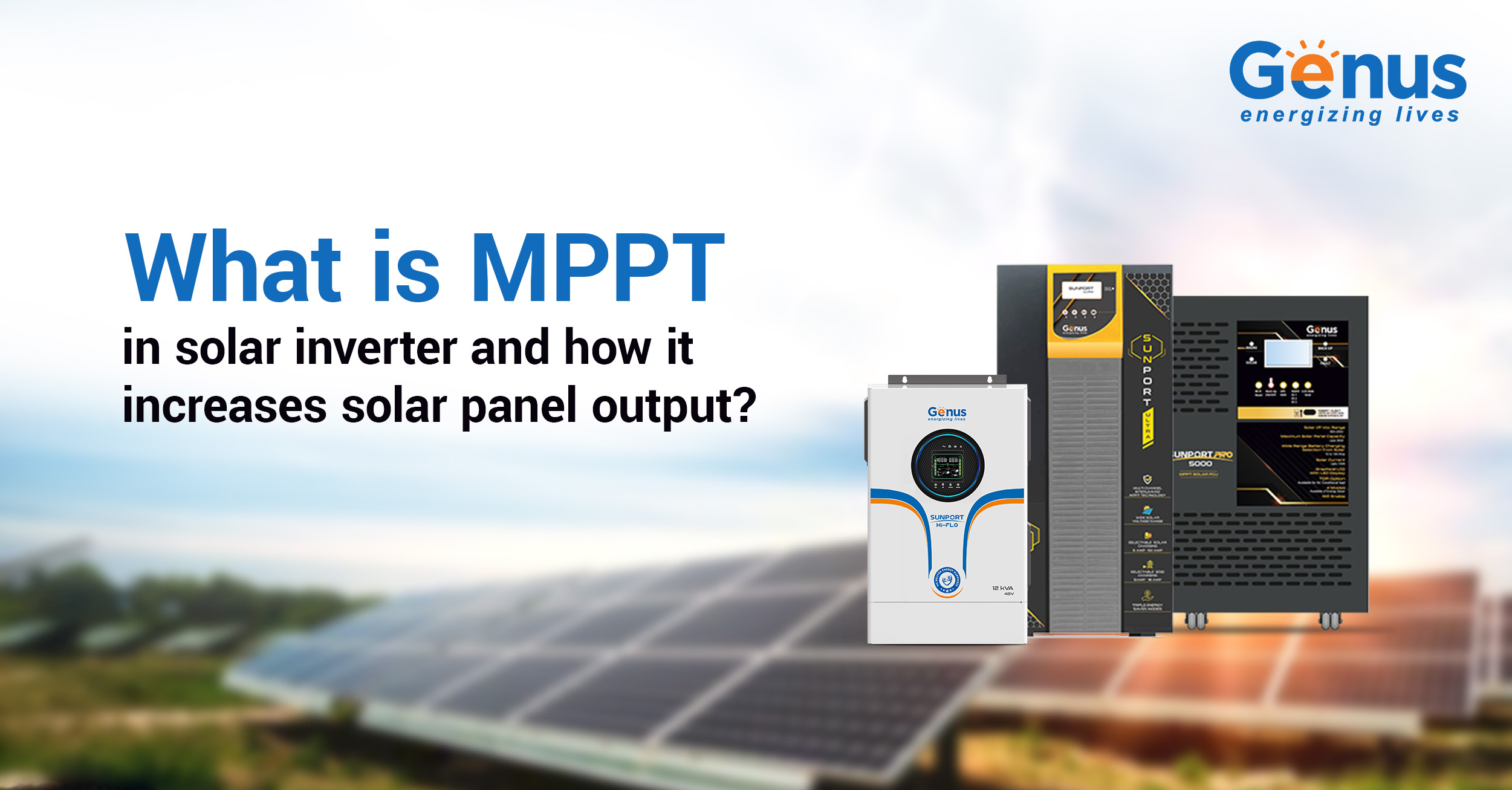
MPPT is the term that you will frequently come across if you are also looking to invest in solar inverters. But what is meant by MPPT in a solar inverter? How is it useful for maximizing the solar panel performance? In this blog, we are going to discuss MPPT (Maximum power point tracking) breaking it down into simple terms. We will also explain how it helps make the system more efficient, smarter and cost-efficient.
The reliability and efficiency of solar energy systems is more than ever before and the factor that plays a major role in this is MPPT. With an understanding of MPPT and how it helps minimize energy loss and maximize performance, you will be able to leverage the benefits whether you are working with an off-grid or grid-tied system.
What is MPPT in solar?
The smart technology that helps solar panels operate at their best effective voltage is called MPPT. With this, solar panels perform at their best voltage even when the load demands or sunlight conditions fluctuate. In the absence of MPPT, this valuable energy is wasted and the system is not able to utilize it. This is especially when grid or battery requirements and panel voltage do not match with each other.
This is the reason why for modern PV systems, MPPT is considered to be the must-have technology. The MPPT algorithms keep adjusting solar array operating points continuously to extract the best possible power. With this, the problem of underperformance due to temperature shifts, shade or charge level of the battery is avoided.
So solar inverter systems can perform at their peak efficiency with the help of MPPT technology. The electrical operating point of the solar array is adjusted by MPPT to get the maximum power available, whether your system is with battery storage or is grid-tied.
How the output of a solar panel is increased by MPPT?
Here are the important factors that make MPPT boost the performance of your solar system significantly.
Enhance efficiency
The solar panel output could be increased by 20-30% with the help of MPPT, mainly when the weather conditions are fluctuating.
Real-time fine-tuning
It continuously adjusts and monitors the current and voltage to ensure that the performance of solar panels is at its peak always.
Better performance in low light
If the weather conditions are rainy, cloudy or winter then the MPPT system performs at its maximum efficiency compared to the traditional inverters.
Battery charging optimization
The batteries are charged more efficiently and faster with the help of MPPT for both off-grid and hybrid systems which also ensure prolonged battery life.
MPPT benefits in solar system
MPPT is a very important element in the solar system for maximizing performance and enhancing returns in the long term. There are several benefits of MPPT in solar systems that are useful in both commercial as well as residential PV systems:
Maximizes energy production
The MPPT system with solar inverters and charge controllers keeps adjusting the operating point of the array continuously to offer the maximum power point. This helps ensure the fact that the best available energy from existing irradiance is extracted by the system.
Enhance the efficiency of solar system
The power losses that arise due to the fixed operating points are prevented by MPPT (Maximum power point tracking) by optimizing solar panels’ electrical operating points. With this enhanced efficiency, the system can convert the higher overall sunlight into electricity making the entire system more operational in renewable energy harnessing.
Reduces partial shading impact
In the series connections that have partial shading, MPPT helps ensure that the modules that are shaded also operate at maximum efficiency. Hence the total loss of energy is also limited and it makes it overtake the simple PWM controllers.
Adjusts well with fluctuating conditions
In the case when conditions keep fluctuating all through the day, the system is still kept at the best of its efficiency by MPPT. It responds dynamically to changes such as partial shading, module temperature and sunlight intensity.
Also Read: Sunport Hi-Flo High-Frequency Off-Grid Inverter: Compact Powerhouse for Modern Homes
Why is investing in MPPT solar inverters the right move?
Looking forward to install solar system? Select the best solar inverter powered by MPPT technology like Sunport Hi-Flo. Here are the reasons why you should invest in MPPT solar inverters:
- Better ROI
- Efficient working with advanced solar systems and lithium-ion batteries
- Higher yield of energy
- Ideal for mixed weather and climatic conditions
Make the smart move, upgrade to MPPT
MPPT solar inverter is the must-have whether you are setting up a commercial or residential solar power system. This will help in maximizing the energy savings with faster charging of battery, better performance and also ensures that you have made a future-ready investment. So don’t just look at the prices when you are selecting a solar inverter, also look for MPPT and make the smart choice. If you are looking for Hi-Flo, the best solar inverter with MPPT, then contact us at: info@genusinnovation.com or +91 9667123456 today and get the best product matching your power requirements.
FAQs
Q. What is MPPT in a solar inverter?
A. Solar inverters are able to extract maximum potential power from solar panels with the help of MPPT.
Q. How is the solar panel output improved by MPPT?
A. The solar array operating point is adjusted continuously by MPPT to maximize solar power due to low sunlight or shading and hence maximize the energy conversion.
Q. Is it possible for MPPT inverters to operate in low-light conditions?
A. Yes, since the MPPT inverters adjust in real-time to provide maximum possible efficiency therefore they can provide optimal performance even in low-light or cloudy conditions.
Q. Are solar inverters with MPPT better than those with PWM?
A. Yes, MPPT is a better choice than PWM in terms of efficiency, especially in the conditions of partial shading or varying sunlight. This is the reason why it is an ideal choice for modern solar systems.
Q. Why is MPPT technology important for a solar inverter?
A. With the presence of MPPT, solar panels can operate at their optimal current and voltage. This is true even when there is fluctuation in load or weather conditions. This helps enhance the efficiency by up to 30% making MPPT an important feature for solar inverters.
